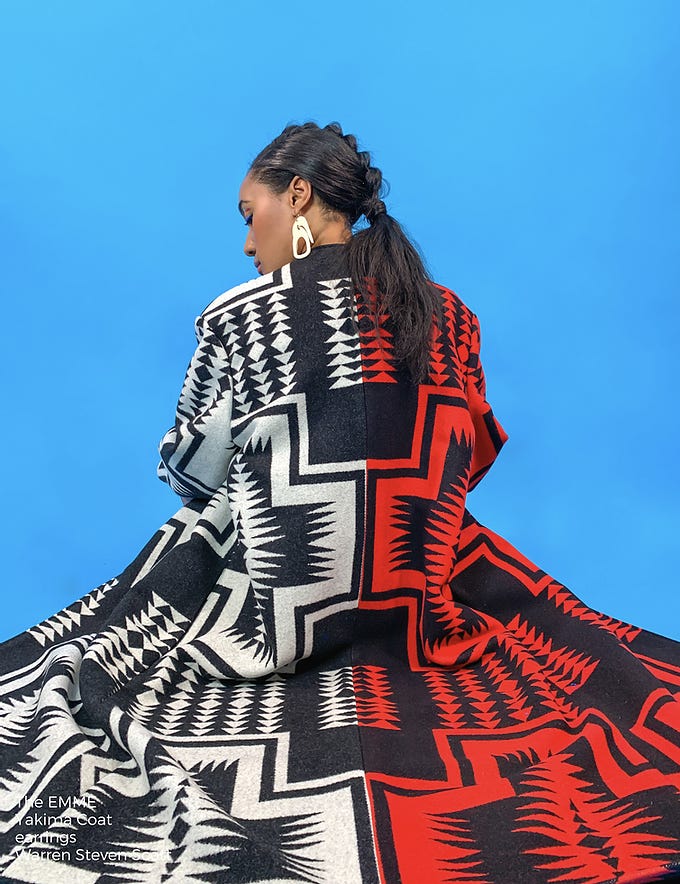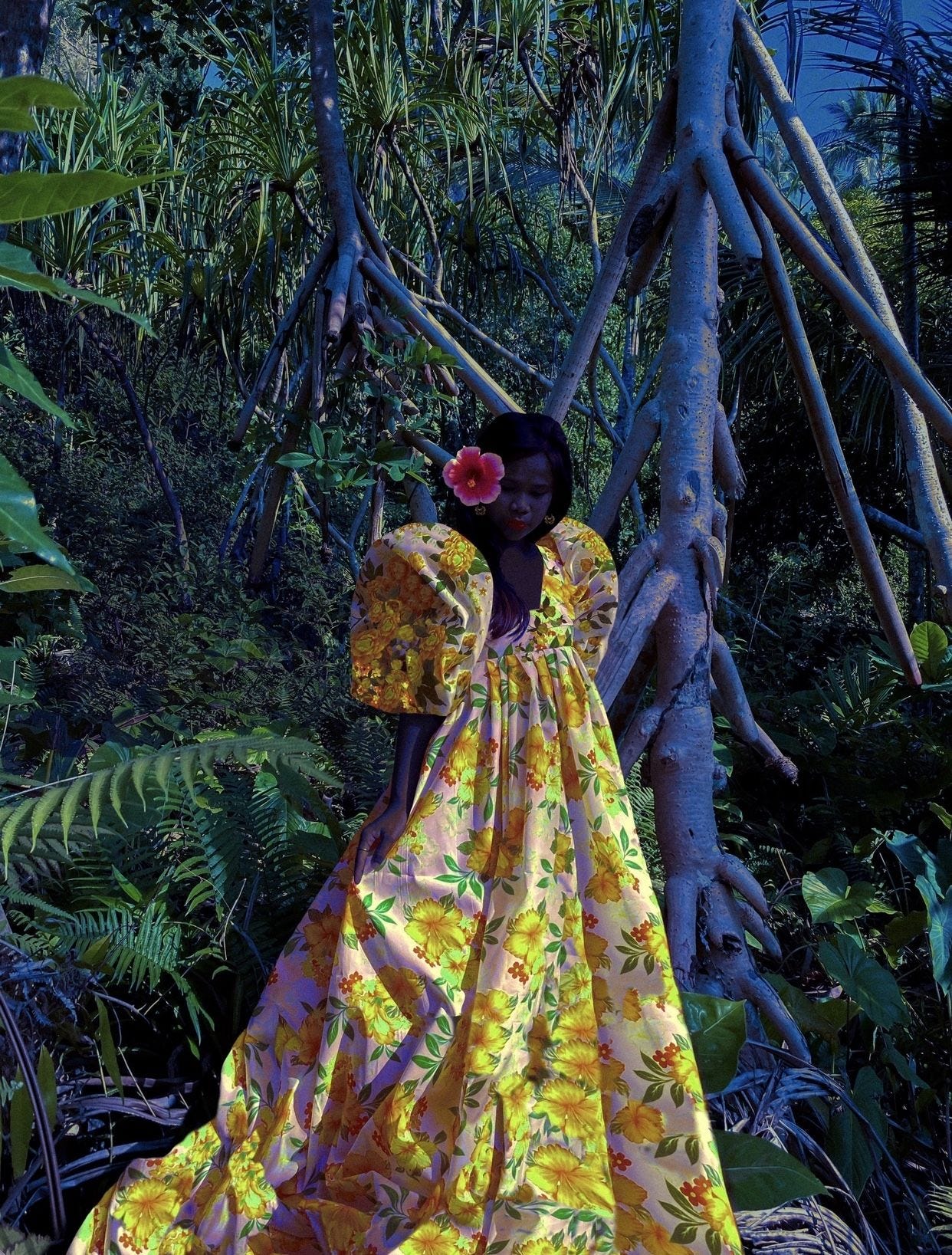Striving towards real impact in fashion, one lesson at a time.
Tommy Hilfiger partners with The Fashion and Race Database, in a first-of-its-kind engagement. Also, we need to talk about a Vogue editor...
Hello everyone,
This week I have some exciting news to share: The Fashion and Race Database is partnering with the iconic American fashion namesake, Tommy Hilfiger, as we embark on a first-of-its-kind engagement–a global fashion brand linking with a fashion education platform.
The announcement has been making its way through the media for the past week, and you can read more about it at WWD (the open-access version of the WWD article is at Yahoo! Finance) and FashionUnited.
It has been my mission to build a bridge between academia and industry in fashion, which has had its skeptics–there’s many in academia who want nothing to do with industry (often because of its capitalist drive) or the public audience (for fear of sacrificing rigor or depth), and many in the industry have felt that the industry will remain stuck in its ways, or has little in common with academia.
I know that the database won’t change everything, and it surely won’t change everyone’s mind when it comes to fashion, race and the mechanisms of power, but this is a start. The goal is to introduce important and relevant research (whether it’s concepts or histories) to fashion brands, and this will not only leverage the power of academia–it will sharpen the emotional and cultural intelligence of brands. Not only that, partnerships connect two opposing ends of the fashion spectrum, demonstrating agreement in the fashion system on issues that matter.
Watch this space as I share more about what this long-term partnership will entail. What I can tell you now is that we will be producing a research project that excavates the under-appreciated contributions of African-Americans to American streetwear–especially when it comes to the iconic looks that Tommy Hilfiger has built its aesthetic upon. Stay tuned!
Profile: Diana Vreeland’s Peculiar Relationship to Blackness

As part of our month-long research partnership with Holt Renfrew, Dr. Jonathan M. Square has written three essays that explore the most insidious and troubling trends in fashion history he’s uncovered so far.
We begin with his profile of the legendary Vogue fashion editor, Diana Vreeland. Vreeland has been remembered for many things, but few reflections in fashion history discuss her fascination with Blackness–and her love of blackamoors in particular (we will discuss blackamoors in detail next week).
Vreeland’s commentary on blackness and the wearing of blackamoors reveals prevailing views on the ornamental use of black figures at the time, traces of which occasionally resurface today in antique stores and luxury fashion. Vreeland is most remembered as an enduring tastemaker and groundbreaking editor-in-chief at Vogue, but it should not be forgotten that she is also perpetrator of not-so-subtle racism that prevailed among women of her race and class.
Read on, as Dr. Square unpacks Vreeland’s “peculiar” relationship to Blackness.
From The Library: Contemporary Native Fashion
This week, FRD Researcher Laura Beltrán-Rubio is examining contemporary Native fashion:
Native American design is an important force in contemporary fashion. Traditional Native American art forms have been subject of inspiration and, at times, plagiarism and cultural appropriation for mainstream fashion. However, Native designers themselves have also broken into the fashion industry, reincarnating traditional art forms to create of-the-moment and, at times, forward-looking fashion. Their work embodies one of the many ways in which fashion and dressing are acts of resistance. This selection celebrates the range and talent of contemporary Native American fashion designers.
Native Fashion Now: North American Indian Style by Karen Kramer, Jay Calderín, Madeleine M. Kropa, and Jessica R. Metcalfe
In Search of Native American Aesthetics by Leroy Meyer (Open-Access Article)
Meet The Native American Fashion Designer Giving Vans A New Look | TODAY by Today (Films & Documentaries)
alter-NATIVE Ep. 1 “Bethany Yellowtail: Sun Road Woman and Fashion Designer” by Billy Luther (Films & Documentaries)
Native Designers of High Fashion: Expressing Identity, Creativity, and Tradition in Contemporary Clothing Design by Jessica R. Metcalfe (Lectures & Panels)
‘The Library’ is where we collect and organize countless educational sources all in one place. Referenced by educators, students, fashion enthusiasts and curious minds, this multi-faceted repository provides an expanding selection of tools for learning about all matters connected to fashion, appearance, power and the impact of ‘race.’
Do you appreciate our content and research? Learn about our sponsorships or support us with a one-time or monthly, sustaining donation!
Objects That Matter: The Terno
This week we revisit the Terno, researched by guest contributor Camay Abraham:
The terno is the national dress of the Philippines. It evolved from the Maria Clara or Traje de Mestiza dress, which originated from the Baro’t Saya. The terno is identified by its butterfly sleeves— flat, oversized high-peaked sleeves that are rounded at the shoulders by pleats using stiff cotton, piña (pineapple fabric) or synthetic fabrics. The terno combines western influences with indigenous design and is considered a status symbol of wealth, social class, education, and Filipino femininity.
'Objects That Matter' gathers numerous fashion objects outside of the Western lens and provides a brief history, showing why they matter, as many of these items have been widely appropriated or referenced.
The Calendar: ‘Dialogues on the Art of Arab Fashion’
This Tuesday, February 16, The Zay Initiative is hosting a critical conversation on the importance of collection and memory when it comes to the heritage of dress:
Join this conversation with our Founder, Dr Reem El Mutwalli and Widad Kawar, Founder of the Tiraz Centre in Amman, Jordan, home to the biggest collection of Palestinian, Jordanian, and Arab traditional dress in the world, and the author of Threads of Identity, a record of Palestinian dress and the women who made and wore it. With her childhood and youth spent in Bethlehem and Ramallah, Widad was surrounded by traditional Palestinian weaving and embroidery. The war and displacement in Palestine encouraged her to collect not only the items but the stories and legacies of the women who lost their homes and their culture. For Widad, each item in her collection is a reminder of a person, a place, and an event. Her knowledge stems from the personal stories of the women who made and worn these dresses.
Learn more about this event and how to register on our calendar page.
A global network of events, conversations and opportunities will continue to evolve the discourse on fashion and race. ‘The Calendar’ remains on the pulse and keeps you looped in.
That’s it for now. Please stay safe and we’ll see you next week.
Yours in service and solidarity,
Kim Jenkins
The Fashion and Race Database Team: Rachel Kinnard, Daniela Hernandez, Kai Marcel, Laura Beltrán-Rubio






